In a world where time is money and creativity often feels like a luxury, automated content creation swoops in like a superhero with a cape made of algorithms. Imagine being able to churn out engaging articles, snappy social media posts, and even witty newsletters without breaking a sweat. Sounds like a dream, right? Well, it’s not just a fantasy; it’s the reality many businesses are embracing.
Automated Content Creation
Automated content creation uses advanced technologies to generate written material quickly and efficiently. Businesses leverage algorithms and artificial intelligence to compose articles, social media posts, and marketing materials. This process allows organizations to maintain a consistent output while freeing creative teams for higher-level tasks.
Numerous tools exist that streamline this process. For instance, platforms like Jasper and Copy.ai provide templates and AI-driven suggestions to enhance the writing experience. They analyze existing content to produce engaging narratives that align with brand voice, thus ensuring relevance and effectiveness.
Speed is a significant advantage of automated content creation. By automating routine tasks, companies can reduce production time dramatically. Reports indicate that this technology can cut content generation time by up to 70%. Such efficiencies help businesses meet tight deadlines while still delivering quality content.
Quality remains a top priority in automated content. Many tools employ machine learning to refine their outputs continually. These systems learn from user interactions and feedback, improving the language, style, and tone of the content produced.
Cost-effectiveness further enhances the appeal of automated content creation. Organizations can reduce labor costs associated with content production, allowing for budget reallocation toward other marketing initiatives. Investing in such technologies often leads to significant long-term savings.
Adopting automated content creation presents challenges as well. Users must ensure that the content generated maintains a human touch. Balancing automation with creativity is crucial to avoid generic or robotic output.
Benefits of Automated Content Creation

Automated content creation presents numerous advantages for businesses eager to optimize their workflows.
Increased Efficiency
Content generation can occur significantly faster with automation. Reports indicate that this technology cuts content production time by up to 70%. Teams can produce articles, social media posts, and newsletters in less time, allowing for timely responses to market trends. Resources can be allocated more effectively, as manual writing tasks disappear. This efficiency encourages a consistent output that keeps brands in the spotlight. Additionally, creative teams can focus on strategy and innovative projects instead of mundane writing tasks. Over time, the accumulated efficiency can contribute to a company’s overall productivity.
Cost-Effectiveness
Automated content creation offers substantial cost savings. Organizations can significantly reduce labor costs by minimizing the need for extensive writing teams. Money earmarked for content production can then be reallocated toward other vital marketing initiatives. This technology requires an initial investment, yet the long-term savings often justify the expenditure. Many businesses find that they can maintain or even improve quality while scaling content output without increasing expenses. By embracing this approach, companies foster a sustainable model that enhances their financial health while maximizing audience engagement.
Tools for Automated Content Creation
Automated content creation tools streamline the writing process for businesses, enhancing efficiency and productivity. Several options cater to varying needs and preferences.
Popular Software Options
Jasper provides robust features for those seeking advanced AI assistance. Copy.ai stands out for its easy-to-use interface, making it ideal for beginners. Other notable software includes Writesonic, which generates eye-catching advertisements, and Rytr, known for generating creative copy swiftly. Each of these tools offers unique capabilities that can cater to specific business requirements, fostering creativity while saving time.
Key Features to Consider
When selecting automated content creation tools, consider user-friendliness as a top priority. Assess customization options, which enable tailoring outputs to align with brand voice. Quality assurance through machine learning should also guide the choice; many tools refine their content based on feedback. Scalability represents another crucial factor; businesses often aim for tools that grow with their content needs. Pricing plans may vary significantly, emphasizing the importance of evaluating the cost versus benefits for long-term use.
Challenges of Automated Content Creation
Automated content creation presents distinct challenges that organizations must navigate for successful implementation.
Quality Control Issues
Maintaining quality in automated content creation poses significant challenges. Mistakes can occur, leading to inaccuracies and ineffective messaging. Algorithms may generate text that lacks coherence or fails to align with brand voice. Organizations often address this by implementing robust quality control measures. Regular audits of the generated content help identify and mitigate errors. Leveraging user feedback and machine learning improves the quality of future outputs. Consistency in quality assurance directly influences audience trust, making it essential for businesses to prioritize these efforts.
Impact on Creativity
Automated content generation can hinder creativity, as reliance on technology often leads to formulaic outputs. Routine content risks becoming generic, failing to engage readers. Creative teams may feel constrained by templates and AI suggestions that lack originality. Balancing automation and human creativity becomes crucial in producing compelling narratives. Companies can encourage their teams to intervene in the content creation process. Emphasizing human insight fosters innovation and allows for a unique brand perspective. Ultimately, integrating the human element into automation can enhance content quality while supporting creativity.
Future Trends in Automated Content Creation
Advancements in AI technology shape the future of automated content creation. Machine learning models continuously learn from user interactions, leading to increasingly accurate and tailored outputs. This evolving proficiency enhances the relevance of generated content, ensuring it aligns closely with brand voice and audience expectations.
Integration of natural language processing improves the quality of automated writing. Tools will produce more nuanced and contextually aware articles, resulting in compelling narratives that resonate with readers. This trend allows businesses to maintain a human-like touch while leveraging automation for efficiency.
Platforms are shifting towards personalization, capturing user data to create customized content experiences. Engaging this level of specificity greatly enhances audience interaction and retention rates. Marketers gain the ability to deliver messages that reflect individual preferences, ultimately driving higher conversion rates.
In addition to personalized content, emerging trends emphasize multi-channel distribution. Automation tools are adapting to manage content across various platforms seamlessly. Effective synchronization maximizes exposure and ensures consistent messaging regardless of the channel.
Concerns around ethical considerations influence the development of automated content systems. Transparency in the use of AI-generated content is becoming paramount. Companies are exploring ways to communicate the use of automation in content creation, fostering trust with their audiences.
Simultaneously, the need for combating misinformation challenges automated content creation. Robust fact-checking mechanisms are essential to uphold quality and credibility. Organizations are investing in developing more sophisticated algorithms that verify data accuracy before publication.
Looking ahead, businesses will increasingly adopt hybrid models, balancing automation and human creativity. This collaborative approach enriches content quality while streamlining production processes. Overall, these trends signify a dynamic shift toward more intelligent and adaptable content creation strategies.

